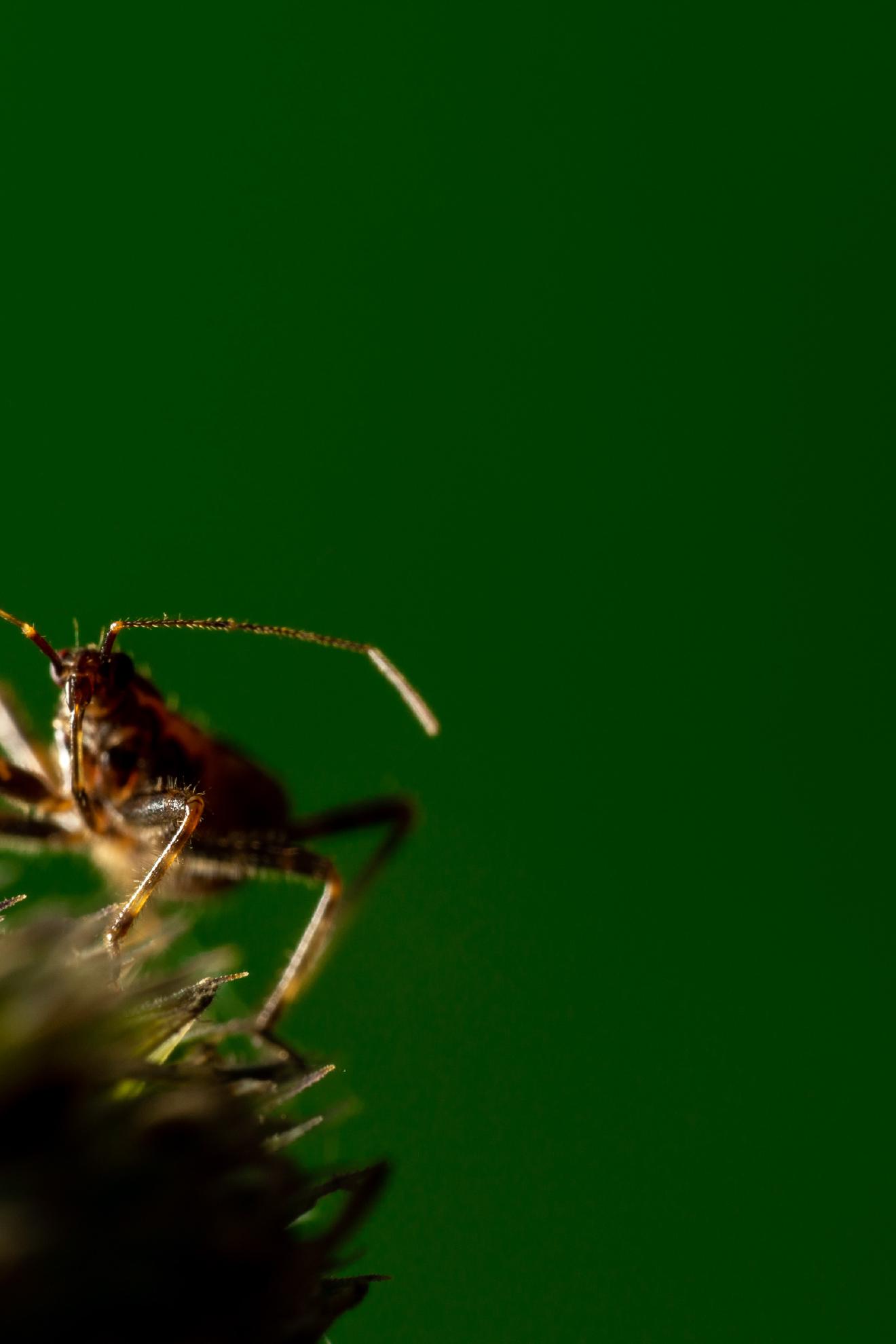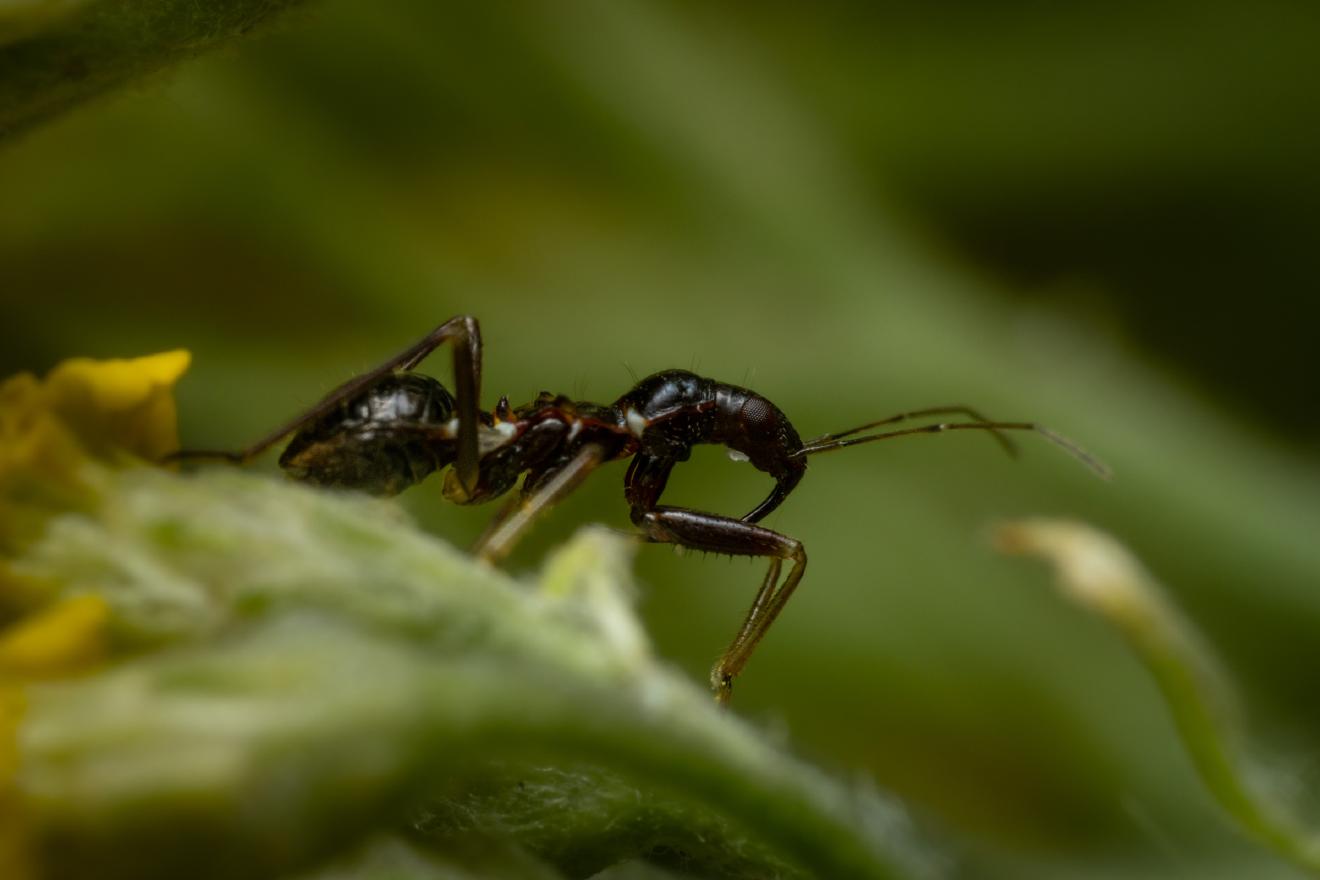Ant Damselbug
Lat. “Himacerus mirmicoides“
species
of family
“Damsel Bugs“
1 species
The Himacerus mirmicoides bugs are named for their resemblance to ants in the early stages of their life cycle. They are found in most of Europe and inhabit areas with low herbage and dry open spaces. These bugs can reach a length of 7-8 millimetres and have a brown body with a black connexivum displaying orange-red spots. They have partly-winged reddish wings and shorter hairs on their hind tibiae. Adults can be found throughout the year, with mating and egg-laying beginning in spring and the new generation emerging by August.
Etymology
The name “mirmicoides” comes from the similarity of nymphs in the early instars to ants.
Distribution
These bugs can be found in most of Europe.
Habitat
These bugs can be found on the ground, in low herbage and in dry open areas.
Description
Himacerus mirmicoides can reach a length of 7–8 millimetres (0.28–0.31 in). These bugs have a brown body with a black connexivum showing orange-red spots. They are partly-winged, with quite reddish wings.This species is rather similar to Himacerus apterus, but it is smaller, with shorter antennae and longer wings. Moreover, the hairs on the hind tibiae are shorter.The nymphs resemble ants and the appearance of a typical hymenopteran “waist” is created by the paler coloration of the back of the thorax, contrasting with the rest of the body which is mainly black.
Biology
Adults can be found all year around. Mating and egg-laying begins in spring with the new generation occurring in August.
Further reading
Kerzhner I.M., 1996 – Family Nabidae – Catalogue of the Heteroptera of the Palaearctic Region
External links
Picture story about the biology and behaviour of Ant Damsel Bug Himacerus mirmicoides (in German) Biolib


Ancestry Graph
Further Information
Copyright

This article uses material from the Wikipedia article Himacerus mirmicoides the free encyclopedia Wikipedia which is released under Creative Commons Attribution-ShareAlike 4.0 International License). On Wikipedia a list of authors is available.
